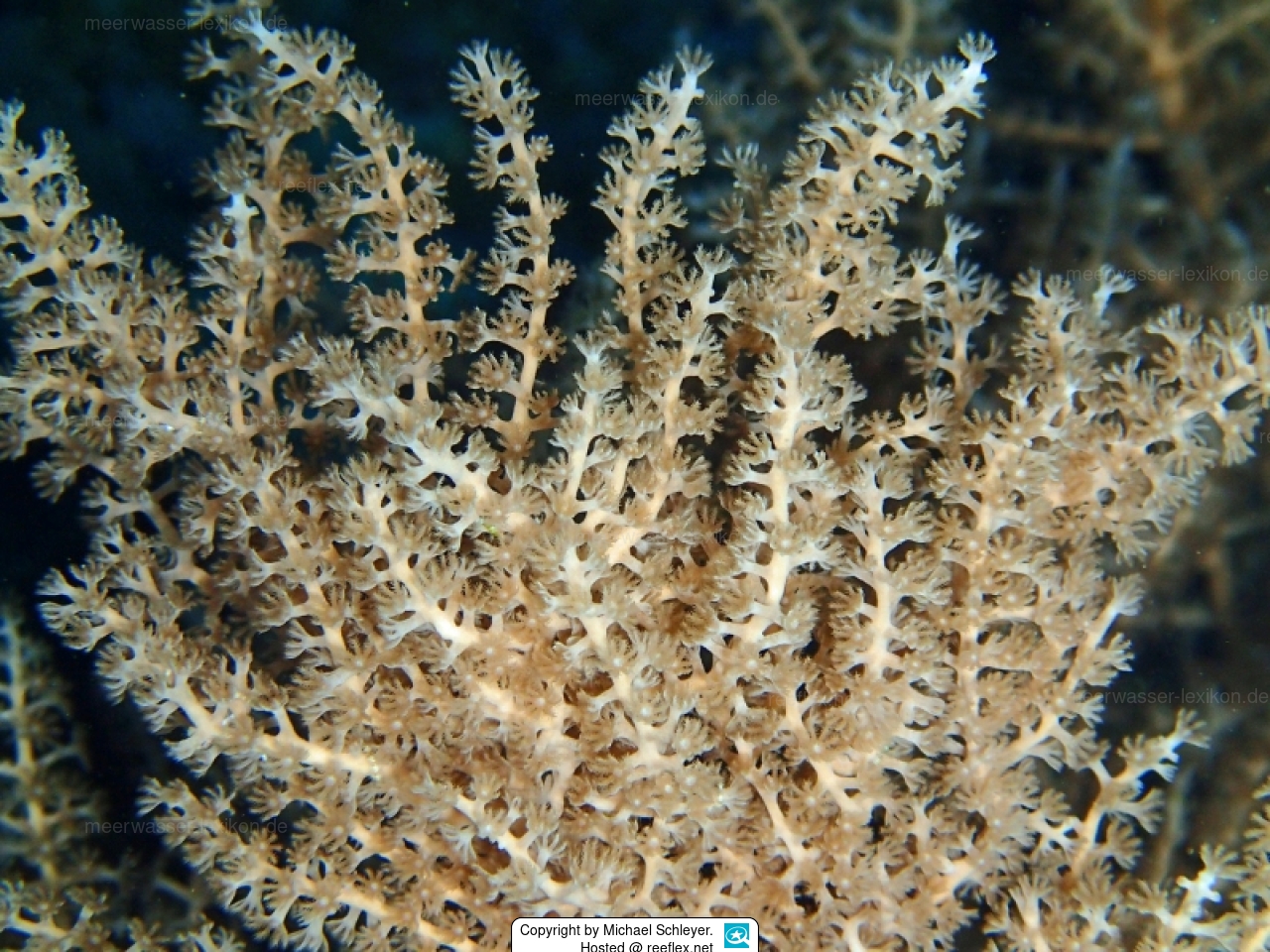Info
Coelogorgia palmosa grows in bushy to tree-like colonies, reaching up to 30 cm in height and beyond.
It is generally rare, but fairly extensive colonies have been encountered on many reefs of Mayotte.
Being goronia-like, the tube coral makes a striking contrast to the more common soft corals.
Habitat: The tube coral is found on slopes of outer and fore reefs, in lagoons and on submerged shoals.
The tube coral requires bright lighting and gentle water movement.
Its color is uniform cream to light brown.
Although Coelogorgia palmosa gets most of its nutritional needs from zooxanthellae, occasional feeding on plankton-like foods is beneficial.
Characteristic: The polyps of Coelogorgia palmosa are not retractable.
It is generally rare, but fairly extensive colonies have been encountered on many reefs of Mayotte.
Being goronia-like, the tube coral makes a striking contrast to the more common soft corals.
Habitat: The tube coral is found on slopes of outer and fore reefs, in lagoons and on submerged shoals.
The tube coral requires bright lighting and gentle water movement.
Its color is uniform cream to light brown.
Although Coelogorgia palmosa gets most of its nutritional needs from zooxanthellae, occasional feeding on plankton-like foods is beneficial.
Characteristic: The polyps of Coelogorgia palmosa are not retractable.







 Prof. Michael Schleyer, Südafrika
Prof. Michael Schleyer, Südafrika

